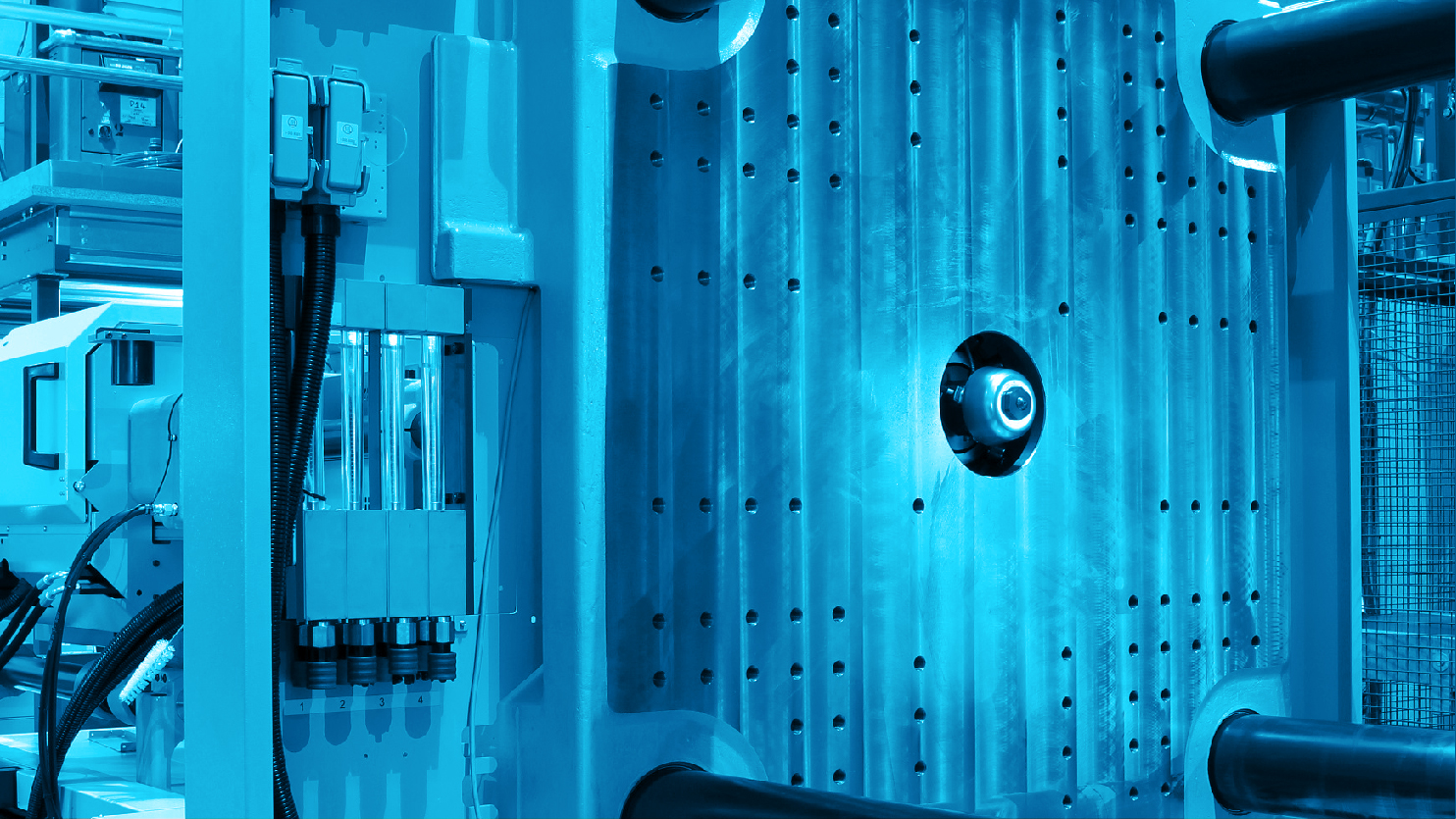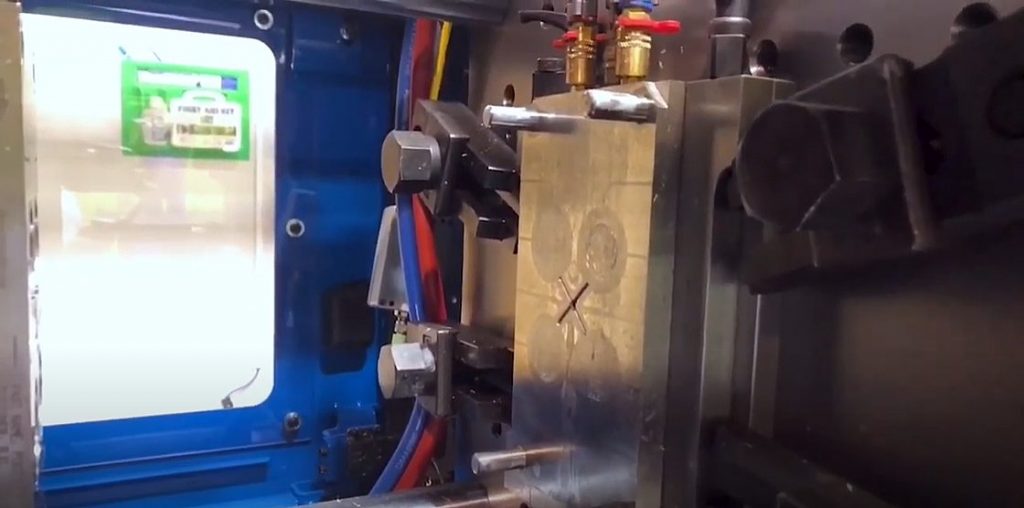
Besides the injection molding machine itself, the second most expensive piece of equipment that we use on a daily basis is the mold. When a mold is damaged, you don’t just have the cost of repairs, but also the cost of downtime and labor. That’s why it’s so important to set up mold protect to safeguard against damage.
Here are 3 components to setting up mold protect on your injection molding machine.
1. The start position of the mold protect
A simple way to think about start position is, when the mold is closing, when do you get to the point where something might break in the mold? In image 1, that point would be when the mold hits the leader pins. This is the point where we would want to start mold protect.
Close the mold until there is a small gap between the mold half and the protruding part of the other half that is at risk of damage. Then look at the mold position on the controller to see where you want the mold protect to begin. For image 1, the mold position is 1.69 inches. So we set the low pressure mold protect position for 1.69 inches. That is when mold protect will start.

2. The end position of the mold protect
You want to stop protecting the mold once it is completely closed. This is called clamp up position or mold touch position on the machine. Clamp up the mold in mold set until there is no gap between the mold halves. Read the position on the mold machine—for image 1, the mold position is 0.03 inches. Set the clamp position on the machine slightly higher than the actual position to protect it.
3. The speed and pressure during mold protect
Now that we’ve established starting and ending points for mold protect, we need to set the speed and pressure we allow the machine to reach during mold protect. Generally, you want to slow down during this transition period and set the pressure low enough that if there’s something in the way of the mold halves, it will stall the clamp movement and give a clamp alarm.
The pressure aspect is the most important setting during mold protect. You want to use as little pressure as possible to get the mold from mold protect start position to clamp up position. If the pressure is really high, then it might not stop on a part that is in the way. You can experiment by slowly lowering your pressure and eventually getting to a point where the mold doesn’t clamp anymore—be sure to do this with nice clean leader pins and grates. Resist the urge to raise the pressure every time the mold doesn’t clamp, because there might be something in the way, or the leader pins might be dirty.
Conclusion
Following these simple steps will help you protect your valuable mold asset. Want to see an example in action? Check out our video “Basics of Mold Protect” on Youtube.
